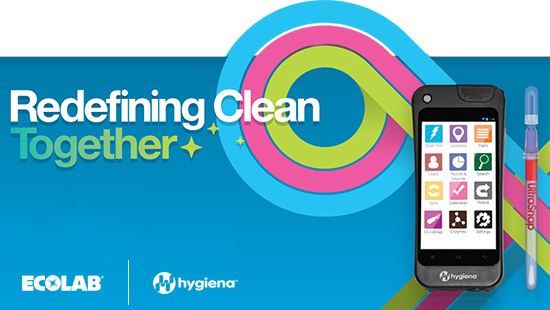Next Generation ATP Testing Takes Cleanliness Verification to a Whole New Level
By Fernanda Cunha, Marketing Director for Food & Beverage, North America

As the importance of cleanliness verification reaches an all-time high, next generation ATP testing platforms, combined with effective cleaning and sanitation, help to provide reassurance that employees and food stay safe.
Today visibly clean isn’t enough. Under the Food Safety Modernization Act (FSMA), the largest overhaul in FDA’s history, food processing facilities must not only have food safety programs in place, but they must collect quantitative data to demonstrate that their cleaning and sanitation programs are working.
Taking this preventive versus reactive approach benefits everyone. As a food processor, it helps to protect your reputation. It reduces the risk of foodborne illness, closures and recalls. It can improve efficiency and reduce costs. And with COVID-19 concerns, it may help keep employees safe too. Beyond meeting regulatory requirements, it provides reassurance to today’s consumers who pay extra attention to the food they eat and the conditions under which it’s produced.
Is Your ATP Program As Effective As It Could Be?
Chances are you already use ATP testing to monitor cleanliness. ATP testing measures adenosine triphosphate, an enzyme present in all organic matter, living and once living. You simply swab a surface to be tested, and then insert the swab into a luminometer, which detects residual ATP. The presence of ATP indicates improper cleaning and the presence of contamination.
But even if you have an ATP testing program in place, it may not be as effective as it could be. If your program lacks structure, or you aren’t taking advantage of today’s most advanced technology, it may be suboptimal when it comes to maximizing efficiency and minimizing your exposure to risk.
Experts Recommend These Best Practices:
Have a consistent process. Any testing program should consistently adhere both to your guidelines and those of FDA. In addition to identifying things like what should be cleaned and how often, written sanitation standard operating procedures (SSOPs) should include detailed instructions, tools and analytical methods, and corrective actions for ATP testing.
Understand the purpose. Often there is confusion around the role of ATP monitoring. The appropriate sequence is to clean, test, reclean if needed, and then sanitize. Swabbing does not verify sanitation, it verifies cleanliness. However, by removing organic matter, you remove material that could support the growth of microorganisms and you create a clean surface for optimal sanitation results.
Make it easy. Today’s most advanced ATP monitoring systems have touchscreen screen designs and work like smartphones, making them incredibly intuitive and minimizing the need for extensive training. Having the easiest-to-use tools can help to prevent human error and ensure that you are getting consistent, repeatable results even with high employee turnover.
Evaluate and act on outcomes. Instead of testing a surface, recleaning if necessary, and then moving on, a best practice is to capture that data and use it to identify trends. Next generation systems like Hygiena’s EnSure™ Touch make it easy.
From the handheld meter, you can choose from several pre-built reports and instantly display trend analysis and reporting by date, plan and location. Custom fields allow you to view results by test product (i.e., enzyme or allergen), group results by zone or production line, and much more.
If certain materials, surfaces or locations consistently fail ATP tests, evaluate the processes, products or dilutions used in those areas and leverage that data to improve your cleaning program. Your Ecolab representative can help.
Use a cloud-based platform. Instantaneous data sharing is especially beneficial for organizations with multiple facilities. A cloud-based platform combined with the right software gives food safety directors a birds-eye view of overall testing performance. They can easily compile data, gain broader insights, compare results across plants, and assess and remedy food safety risks. It also helps to facilitate compliance with HAACP and FSMA regulations.
Leverage remote training and support. Another must these days is on-screen training and support. The best platform providers offer remote onboarding and training following a purchase. Once you are using the system, being able to securely share your device’s screen for rapid support limits downtime and allows you to get up-and-running more quickly.
Make it part of a complete cleaning and sanitation program. The first step to mitigating food safety risks is using the right solutions and systems to clean and sanitize your facility. Just as important, however, is verifying that your products and procedures are working.
Today’s most advanced ATP testing programs put you in control and allow you to be proactive instead of reactive when it comes to ensuring food safety. If you aren’t doing ATP monitoring or you would like to update your current program, contact your Ecolab representative to get started.
Ecolab Food and Beverage North America and Hygiena LLC have partnered to redefine clean together, providing the support, solutions and expertise to keep your facilities clean and sanitary. Learn more about our new Hygiene Monitoring Program, which combines the EnSURE™ Touch ATP environmental monitoring system, the SureTrend™ Cloud online data analysis platform, and personalized consultation and service by your Ecolab representative.



